|
1935 - The Jubilee Garden Party
With the acquisition of his Miles M.2F Hawk Major G-ACYO in 1934, Myles Bickerton wanted to permanently base the aircraft at Denham. At the same time he was approached by Sir John Holder, a member of the Heston Aero Club and fellow Denham resident, who asked if he could base his Miles M.2M Hawk Major at Hawksridge. This aircraft, G-ADCV, had been purchased new from the factory by Sir John on 20 February 1935 and was a modified version of the original Hawk Major design, with a built up rear fuselage to allow for a canopy to enclose the rear cockpit. The front cockpit remained open giving the M.2M a rather unusual appearance.
|
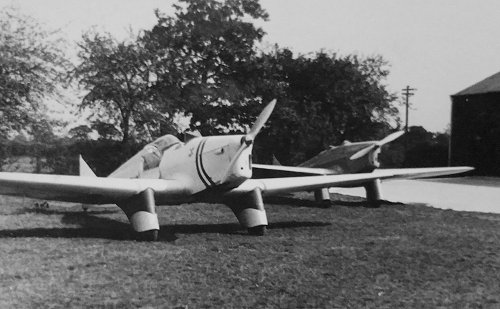
Sir John Holder's Miles M.2M Hawk Major with its enclosed rear cockpit was the second resident at Hawksridge.
|
Both these aircraft were largely made of wood and linen, so they required shelter to protect them from the weather. Myles applied for planning permission for a hangar capable of housing three or four aircraft. This was granted on 26 March 1935 and construction began almost immediately. The hangar was built facing south next to a small bungalow on the north-eastern corner of the airfield which served as a rest area and meeting place for local and visiting pilots. Still in 1935, the opportunity arose for Myles to purchase adjoining land to the north from Mr W G Boyer, a gravel merchant. This was a useful addition, giving more take off distance for the two Miles Hawk Majors, and various visiting aircraft types, whose performace was greater that the dH.60 Gipsy Moth.
|
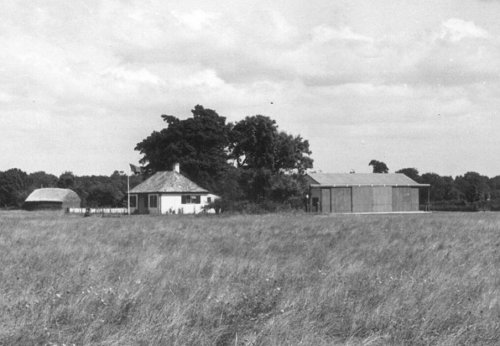
The bungalow in the north east corner of Hawksridge served as a club house, the first hangar, Hangar J, was constructed next to it facing south.
|
Aside from the hangar, a fuel tank and its associated pump were also installed at the western end of the new building. With these developments, more aircraft owners began to take an interest in the airfield. The Airwork Flying Club based at Heston was beginning to find that airfield increasingly congested, so sought permission to move their aircraft to Denham. The first to move across was G-ACTZ, Avro 638 Club Cadet, constructor’s number 720, which had been purchased by the Airwork club on 11 June 1934, moving it to Denham in April 1935. The small hangar was soon full!
|
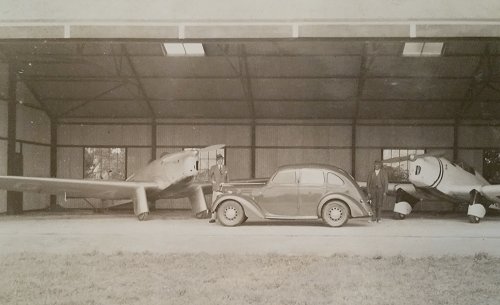
Hangar J with Myles, Sir John Holder and their Miles M.2s inside. Three or four aircraft were the limit in the first hangar.
|
In 1935 the Country was celebrating the Silver Jubilee of King George V. To show off his aerodrome to his friends, Myles decided to throw a Jubilee Garden Party at Hawksridge. Marquees were erected between the bungalow and the hangar where lunch and drinks were served. The event was a tremendous success with over thirty visiting aircraft flying in to Hawksridge, while a number of other guests arrived by road. The photographs from the event below include some incredibly rare types such as a Southern Martlet, British Klemm Eagle 2, Hendy Hobo and a Cierva C.30 autogyro, G-ACIN. The latter was accompanied by Juan de la Cierva, the Spanish designer of a successful family of rotary winged aircraft, and Alliot Verdon Roe of Avro, who were building the C.30 under licence for private owners and the Royal Air Force as the Avro 671 Rota Mk 1. The autogyro was demonstrated for the crowd of some 300 guests by Mr R A C Brie, one of Cierva's pilots.
|
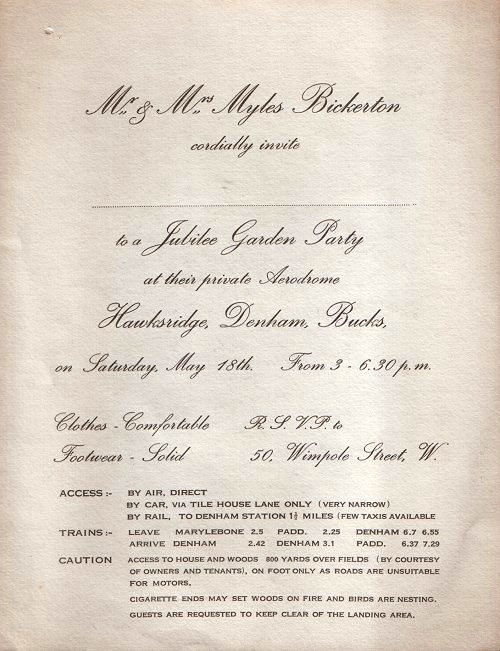
The invitation to the Jubilee Garden Party included directions and a warning about the nature of the roads, as well as one of the first indications of Myles' regard for wildlife and the environment.
|
|
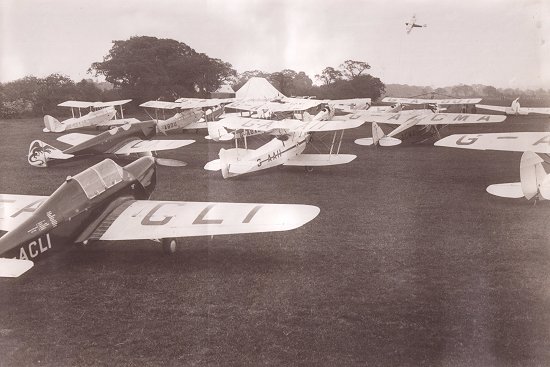
Visiting aircraft flocked to Hawksridge for the Jubilee Garden Party.
|
|
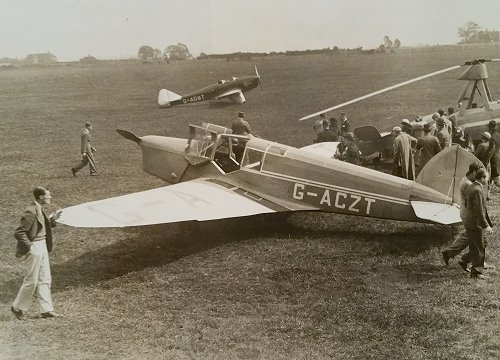
Two of the rare visitors to the Jubilee Garden Party, the British Klemm Eagle 2 and Cierva C.30 Autogyro.
|
|
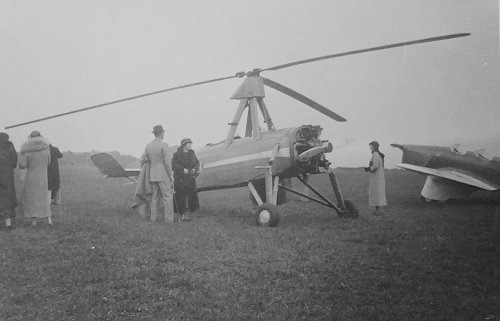
A total of 148 Cierva C.30 Autogyros were built for both civil and military use and was one of the first successful rotary winged aircraft.
|
The success of the garden party attracted yet more owners to the airfield, so a second, larger hangar was required. Planning permission for this was granted on 29 June 1935 and again construction began at once. This larger hangar was built immediately behind the first, facing north onto the extended area of the aerodrome. At the end of the year another new resident arrived in the shape of G-ADMS, a de Havilland dH.87B Hornet Moth owned by Cyril Mills, one of the owners of the famous Bertram Mills Circus.
|
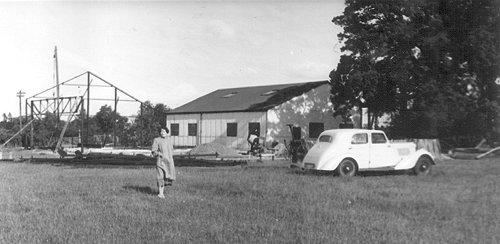
The framework of the second hangar under construction behind the first.
|
|
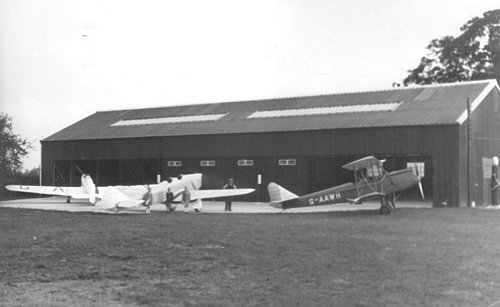
The completed second hangar with resident and visiting aircraft in front.
|
Hawksridge airfield at Denham was now well established as an aerodrome once more. The following year was to see it evolve still further, as the next section will describe.
|
|

